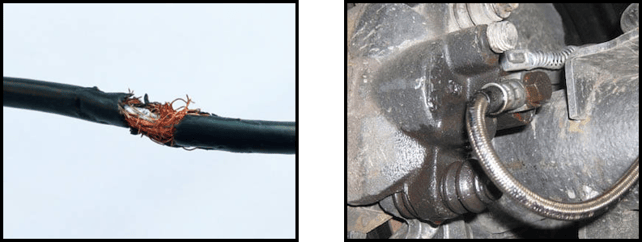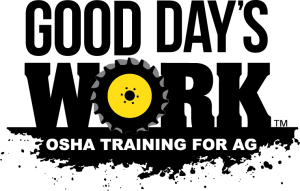Introduction to Trailer Light and Air Testers
 Trailer light and air testers are a must-have for anyone working with trailers, from seasoned drivers to fleet managers. These powerful tools keep your trailer’s electrical and pneumatic systems in top condition. Need to check brake lights, turn signals, or air pressure in the brake system? They’ve got you covered, making sure you’re safe and road-ready every time.
Trailer light and air testers are a must-have for anyone working with trailers, from seasoned drivers to fleet managers. These powerful tools keep your trailer’s electrical and pneumatic systems in top condition. Need to check brake lights, turn signals, or air pressure in the brake system? They’ve got you covered, making sure you’re safe and road-ready every time.
What makes these testers so impressive is their reliability and versatility. Got a faulty brake light right before a long trip? They’ll help you find and fix the issue in minutes. Dealing with sudden air pressure problems? These tools deliver quick, accurate diagnostics to get you moving again. By preventing accidents and avoiding costly delays, trailer light and air testers are the unsung heroes of trailer safety. They’re not just tools—they’re your ultimate peace of mind on the road!
Recognizing the Risks

- Electrical Malfunctions
Frayed wires or bad connections can throw off your test results, leaving you with lighting problems or a false sense of security in a failing system.
- Brake Failures
Ignoring air brake issues like leaks or pressure drops can spell disaster. Imagine struggling to stop—or worse, facing complete brake failure in an emergency.
- Flying Debris or Sparks
Loose connections can spark trouble—literally. Sparks or dislodged wiring can cause injuries or serious damage to your trailer.
- Complacency Over Safety
Rushing through tests or skipping safety checks? That’s a shortcut to disaster, with hidden issues leading to accidents, costly fines, or legal headaches.
Mastering Trailer Light and Air Tester Safety

1. Suit Up with the Right PPE
Before you get started, make sure you’re equipped for safety! The right gear isn’t just smart—it’s essential.
- Safety Glasses or Goggles: Protect your eyes from sparks, flying debris, or sharp wires. Your vision is priceless—keep it safe.
- Insulated Gloves: Whether you’re handling electrical connections or sharp edges, these gloves have your back!
- Steel-Toe Boots: Heavy tools and equipment drops happen—be ready.
- High-Visibility Clothing: Stay seen, stay safe, especially in low-light or high-traffic areas.

2. Check Your Tester Before You Wreck Your Day
A quick once-over of your tester can save you from big headaches down the road.
- Inspect wires, hoses, and connectors for wear or damage. Swap out anything defective—it’s not worth the risk.
- Make sure your battery or power source is charged and ready to go.
- Calibrate the tester for accurate results. A properly tuned tester means reliable diagnostics every time.

3. Create a Safe Workspace
A solid setup sets the stage for smooth work.
- Park That Trailer: Use wheel chocks and engage the parking brake. A rolling trailer isn’t fun for anyone.
- Tidy Up: Clear stray tools and debris to keep your workspace clutter-free and efficient.
- Light It Up: Good lighting lets you see what you’re working on—no guessing needed.
- Vent and Ground: Keep the air fresh and the ground stable. Safety first, always.

4. Test Like a Pro
Stay methodical for results you can trust.
- Start with electrical tests. Check brake lights, turn signals, and marker lights for flickers, outages, or dim issues.
- Move to pneumatic tests. Focus on air pressure levels and listen for leaks in the brake system.
- Keep a record of your findings. Documenting issues means nothing gets missed.
Lessons from Real-Life Incidents
Case Study 1: A Split-Second Decision with Shocking Consequences

Picture this: during a routine test, an operator decides to skip putting on insulated gloves. “It’s just a quick task,” they think, handling a frayed wire without protection. The result? A sharp jolt of electricity courses through them. Luckily, the shock wasn’t serious—but it could’ve been. This close call is a stark reminder: when it comes to electrical work, skipping PPE isn’t just risky—it’s dangerous.
Case Study 2: A Shortcut That Led to Disaster
 Meet Paul, a seasoned driver in a hurry. Skipping his trailer check seemed harmless—he’d done this a hundred times before, right? Wrong. Halfway through his trip, a hidden wiring issue caused his brake lights to fail, leading to a rear-end collision. The fallout? Hours of hassle and a lesson learned the hard way. A simple safety check could’ve spared him the chaos—and prevented a dangerous accident.
Meet Paul, a seasoned driver in a hurry. Skipping his trailer check seemed harmless—he’d done this a hundred times before, right? Wrong. Halfway through his trip, a hidden wiring issue caused his brake lights to fail, leading to a rear-end collision. The fallout? Hours of hassle and a lesson learned the hard way. A simple safety check could’ve spared him the chaos—and prevented a dangerous accident.
Best Practices for Trailer Light and Air Tester Use

- Train Your Team: Make sure everyone knows how to use the tool properly and understands the risks involved—it’s the first step to working smarter and safer.
- Inspect Before You Connect: Check the tester and all connections thoroughly before every use to eliminate potential hazards. Safety starts with a careful look!
- Keep Detailed Notes: Record every test result. Catch issues early, fix them fast, and stop problems from coming back.
- Suit Up Every Time: Your PPE isn’t optional—it’s your shield. Gear up, stay protected, no exceptions.
- Teamwork for Safety: Speak up! Share concerns, tips, and insights with your team to build a culture where safety always comes first.
Call to Action
 Your trailer light and air tester is more than just a tool—it’s your secret weapon for safer, smoother hauls. Now it’s your turn to share! Do you rely on these tools regularly? Got any road-tested tips or lessons to pass on?
Your trailer light and air tester is more than just a tool—it’s your secret weapon for safer, smoother hauls. Now it’s your turn to share! Do you rely on these tools regularly? Got any road-tested tips or lessons to pass on?
Drop your wisdom in the comments below! Let’s grow a community of safety-first operators who are always ready for the road ahead. Stay sharp, stay safe, and let’s turn surprises into confident, hassle-free journeys. Here’s to keeping every haul a success!


